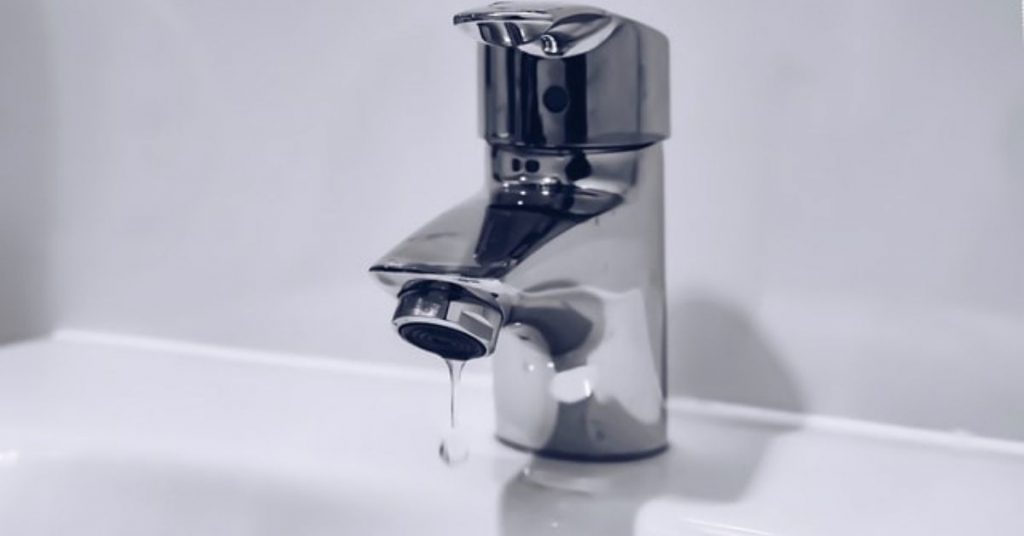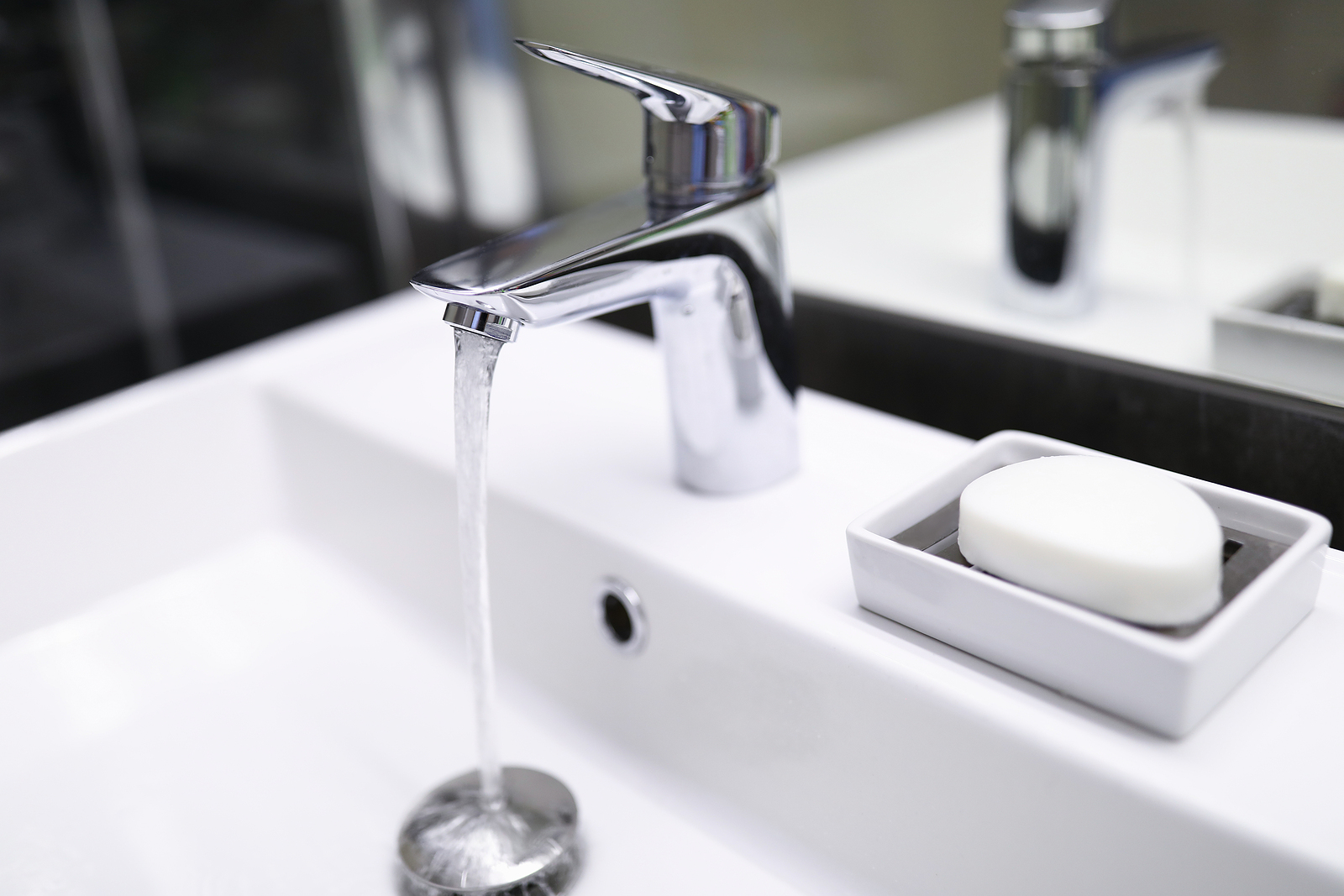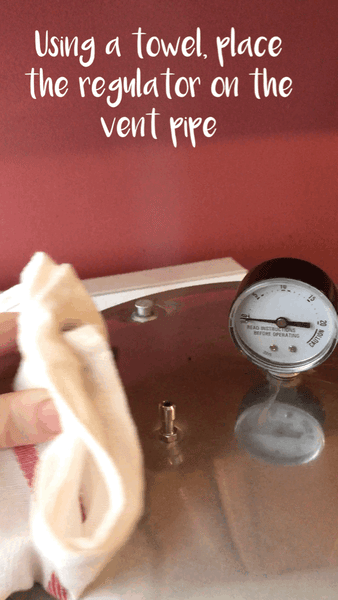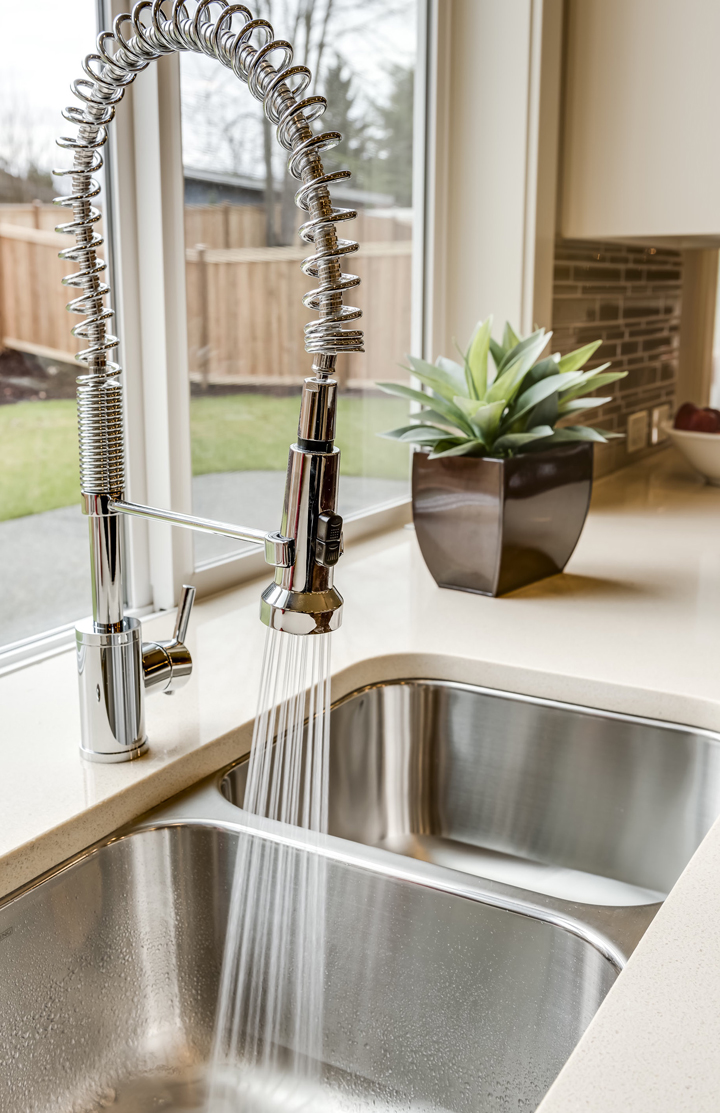Dealing with a bathroom sink that has excessive water pressure can be frustrating and even damaging. Not only can it cause splashing and mess, but it can also put strain on your plumbing system and lead to leaks or burst pipes. Luckily, there are a few simple fixes that can help reduce the pressure and keep your bathroom sink functioning properly. Follow these steps to fix a bathroom sink with too much pressure. How to Fix a Bathroom Sink with Too Much Pressure
Before diving into the solution, it's important to understand what may be causing the high water pressure in your bathroom sink. One common cause is a faulty pressure regulator, which is a device that controls the water pressure in your home. If this is malfunctioning, it can cause the pressure to be too high. Another potential cause is a clogged aerator, which is the small screen at the end of your faucet that helps regulate the flow of water. Mineral deposits or debris can build up in the aerator, causing the water pressure to increase. Common Causes of High Water Pressure in Bathroom Sinks
If you suspect that the high water pressure in your bathroom sink is due to a clogged aerator, start by unscrewing the aerator from the end of the faucet. Rinse it out with water and use a small brush or toothpick to remove any buildup. If the pressure is still too high, you may need to replace the aerator completely. If you suspect a faulty pressure regulator, it's best to call a professional plumber to inspect and repair it. Troubleshooting Tips for a Bathroom Sink with Excessive Pressure
If you have a newer bathroom sink featuring a single-handle faucet, you may be able to adjust the water pressure using the handle. Look for a small screw or cap on the handle that can be removed to reveal the cartridge. You can then use pliers to turn the cartridge clockwise, which will decrease the water pressure, or counterclockwise to increase it. Make small adjustments and test the pressure after each one to find the right setting for your sink. Adjusting the Water Pressure on a Bathroom Sink
If your bathroom sink does not have a pressure regulator, it may be a good idea to install one to prevent future issues with high water pressure. You can purchase a pressure regulator at most hardware or home improvement stores. To install it, shut off the water supply to your sink, remove the old shut-off valve, and install the pressure regulator in its place. Make sure to follow the manufacturer's instructions and consult a professional if you are unsure. How to Install a Pressure Regulator on a Bathroom Sink
If you suspect that your bathroom sink has a faulty pressure regulator, there are a few signs to look out for. These include inconsistent water pressure, unusually high water bills, and banging or rattling pipes. If you notice any of these issues, it's best to have a professional plumber inspect and repair the pressure regulator before it causes further damage. Signs of a Faulty Pressure Regulator in a Bathroom Sink
If you're dealing with a temporary issue of high water pressure in your bathroom sink, there are a few DIY solutions that can help in the meantime. You can try partially closing the shut-off valve under the sink to decrease the water flow, or installing a low-flow faucet aerator to reduce the pressure. However, these are temporary fixes and may not solve the root cause of the issue. DIY Solutions for a Bathroom Sink with Too Much Pressure
If you've tried troubleshooting and DIY solutions but are still dealing with a bathroom sink with too much pressure, it's best to call in a professional plumber. They will have the expertise and tools needed to identify and fix the issue, ensuring that your sink works properly and your plumbing system remains intact. Professional Plumbing Services for High Pressure Bathroom Sinks
The best way to deal with high water pressure in your bathroom sink is to prevent it from happening in the first place. This means regularly checking and maintaining your pressure regulator and aerator, as well as installing a pressure regulator if your sink does not have one. It's also important to use the correct faucet for your sink and to avoid using too much force when turning the handle or adjusting the water flow. Preventing Excessive Water Pressure in Bathroom Sinks
When selecting a faucet for your bathroom sink, it's important to consider the water pressure in your home. If you already have high water pressure, it's best to choose a faucet with a low flow rate to prevent any further issues. Look for faucets with aerators or flow restrictors to help regulate the water pressure and prevent splashing or mess. It's also a good idea to consult with a professional plumber for advice on the best faucet for your specific plumbing system. Choosing the Right Faucet for Your Bathroom Sink to Avoid Pressure Issues
The Impact of High Water Pressure on Your Bathroom Sink

What Causes High Water Pressure in the Bathroom Sink?
 If you have ever turned on your bathroom sink and felt like you were in a water park, then you may be dealing with high water pressure. This can be caused by a number of factors such as the location of your home, the type of plumbing system you have, and even the time of day. However, no matter the cause, high water pressure in your bathroom sink can lead to a number of issues that can affect the overall function and design of your home.
If you have ever turned on your bathroom sink and felt like you were in a water park, then you may be dealing with high water pressure. This can be caused by a number of factors such as the location of your home, the type of plumbing system you have, and even the time of day. However, no matter the cause, high water pressure in your bathroom sink can lead to a number of issues that can affect the overall function and design of your home.
The Negative Effects of High Water Pressure
 While high water pressure may seem like a luxury, it can actually have negative effects on your bathroom sink and overall house design. The force of the water can cause damage to your pipes and fixtures, leading to leaks and costly repairs. It can also create loud and disruptive noises when the water is turned on, which can be a nuisance for you and your family. Furthermore, high water pressure can result in excessive splashing and mess, making it difficult to keep your bathroom clean and organized.
But perhaps the most concerning impact of high water pressure on your bathroom sink is the potential for injury.
The force of the water can cause it to spray out of the sink and onto surfaces such as the walls and floor, creating a slippery and hazardous environment. This can be especially dangerous for young children and elderly individuals, who may have difficulty maintaining their balance.
While high water pressure may seem like a luxury, it can actually have negative effects on your bathroom sink and overall house design. The force of the water can cause damage to your pipes and fixtures, leading to leaks and costly repairs. It can also create loud and disruptive noises when the water is turned on, which can be a nuisance for you and your family. Furthermore, high water pressure can result in excessive splashing and mess, making it difficult to keep your bathroom clean and organized.
But perhaps the most concerning impact of high water pressure on your bathroom sink is the potential for injury.
The force of the water can cause it to spray out of the sink and onto surfaces such as the walls and floor, creating a slippery and hazardous environment. This can be especially dangerous for young children and elderly individuals, who may have difficulty maintaining their balance.
How to Fix High Water Pressure in Your Bathroom Sink
 Fortunately, there are ways to address and fix high water pressure in your bathroom sink. The first step is to
identify the source of the problem
. This may require the help of a professional plumber who can assess your plumbing system and make any necessary adjustments.
Installing a pressure regulator
can also help to reduce the force of the water, preventing any potential damage to your sink and other fixtures.
Fortunately, there are ways to address and fix high water pressure in your bathroom sink. The first step is to
identify the source of the problem
. This may require the help of a professional plumber who can assess your plumbing system and make any necessary adjustments.
Installing a pressure regulator
can also help to reduce the force of the water, preventing any potential damage to your sink and other fixtures.
Conclusion
 While high water pressure may seem like a minor inconvenience, it can actually have a significant impact on your bathroom sink and overall house design. By understanding the causes and negative effects of high water pressure, you can take the necessary steps to address and fix the issue. This will not only improve the functionality of your bathroom, but also ensure the safety of you and your loved ones. So the next time you turn on your bathroom sink and feel like you're at a water park, remember to take action and prevent any potential issues from arising.
While high water pressure may seem like a minor inconvenience, it can actually have a significant impact on your bathroom sink and overall house design. By understanding the causes and negative effects of high water pressure, you can take the necessary steps to address and fix the issue. This will not only improve the functionality of your bathroom, but also ensure the safety of you and your loved ones. So the next time you turn on your bathroom sink and feel like you're at a water park, remember to take action and prevent any potential issues from arising.
















:max_bytes(150000):strip_icc()/home-water-pressure-problems-2718730-v4-3639a1eeda0945239e64b0fe6b6d3401.gif)














:max_bytes(150000):strip_icc()/what-is-under-the-bathroom-sink-3973574-03-c2c800c743054899aca9bdcc0535db34.jpg)





















































:max_bytes(150000):strip_icc()/increase-low-shower-pressure-4052359_FINAL_01-6ece340f72f74bf9ae59e4192b03c0bc.png)







.jpg)










